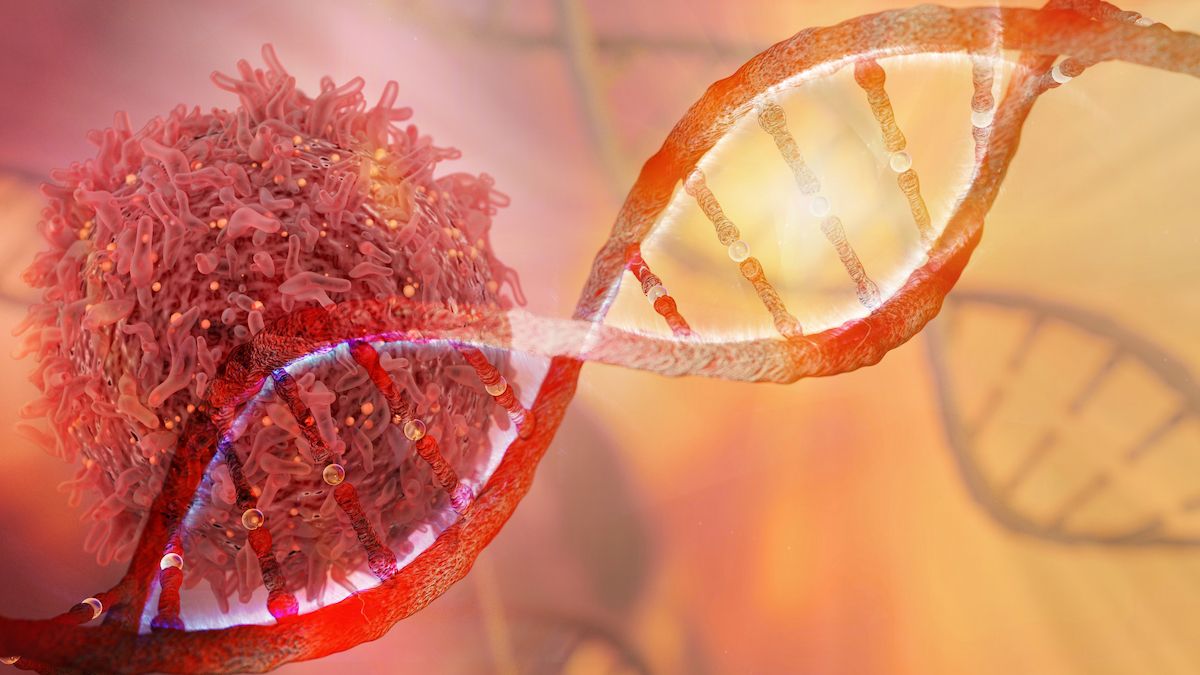Divarasib Yields Sustained Responses in Advanced KRAS G12C+ Solid Tumors
Treatment with divarasib appears to produce a manageable safety profile of low-grade toxicities in patients with advanced or metastatic KRAS G12C–mutated solid tumors.
"The safety profile and encouraging single-agent antitumor activity of divarasib make it a promising clinical candidate both as a single agent and in combination with other anti-cancer therapies," according to the authors of a phase 1 study (NCT04449874) published in New England Journal of Medicine.

Divarasib monotherapy produced long-lasting anti-tumor clinical activity in patients with various types of advanced or metastatic KRAS G12C–mutated solid tumors, according to findings from a phase 1 study (NCT04449874) published in New England Journal of Medicine.
Investigators reported a confirmed response rate of 53.4% (95% CI, 39.9%-66.7%) in a cohort of 58 patients with non–small cell lung cancer (NSCLC). Additionally, 59% of patients had a partial response (PR), and 2% had a complete response (CR). Patients had a median time to response of 1.3 months (range, 1.2-8.3) and a median duration of response (DOR) of 14.0 months (95% CI, 8.3-not estimable [NE]). The median progression-free survival (PFS) in this cohort was 13.1 months (95% CI, 8.8-NE).
In a cohort of 55 patients with colorectal cancer (CRC), investigators observed a confirmed response in 29.1% (95% CI, 17.6%-42.9%). PRs were reported in 35% of patients, and CRs in 2%. Patients in this cohort had a median time to response of 2.2 months (range, 1.2-6.8) and a median DOR of 7.1 months (95% CI, 5.5-7.8). Additionally, the median PFS for patients with CRC was 5.6 months (95% CI, 4.1-8.2).
Among 22 patients with solid tumors outside of NSCLC and CRC, PRs occurred in 8, including 3 with pancreatic adenocarcinoma and 1 patient each with anal adenocarcinoma, cholangiocarcinoma, endometrial squamous-cell carcinoma, large-cell neuroendocrine carcinoma of the lung, and stomach adenocarcinoma. Investigators also observed stable disease in 11 patients, including 4 with pancreatic adenocarcinoma, 4 with cholangiocarcinoma, and 1 each with appendiceal adenocarcinoma, breast cancer, and duodenal adenocarcinoma.
“The safety profile and encouraging single-agent antitumor activity of divarasib make it a promising clinical candidate both as a single agent and in combination with other anti-cancer therapies,” the study authors stated. “Divarasib is being investigated in combination with other anti-cancer therapies, including atezolizumab [Tecentriq], cetuximab [Erbitux], bevacizumab [Avastin], erlotinib [Tarceva], GDC-1971, and inavolisib in this current, ongoing study.
Investigators of this ongoing, open-label, multi-center phase 1 study are assessing divarasib monotherapy in patients with advanced or metastatic KRAS G12C–mutated solid tumors. Patients received divarasib orally once a day at doses ranging from 50 mg to 400 mg in 21-day cycles until disease progression, unacceptable toxicity, or patient withdrawal.
The study’s primary end point is safety. Other end points include pharmacokinetics, preliminary anti-tumor activity, and biomarkers of response and resistance.
Those 18 years and older with disease progression after at least 1 line of standard therapy were able to enroll on the study. Additional eligibility criteria included having measurable disease per RECIST v1.1 criteria, an ECOG performance status of 0 or 1, and a confirmed KRAS G12C mutation by central testing of blood samples or local testing of tumor tissue or blood samples.
The median patient age was 65 years (range, 30-85) in the overall population. Additionally, most patients were female (56%), White (80%), had an ECOG performance status of 1 (58%), and received 2 prior lines of systemic therapy (28%). Investigators noted that Black patients, who made up 1% of the study population, were underrepresented.
Analyses indicated that patients with NSCLC had a response across subgroups based on PD-L1 status and the presence of co-occurring mutations including TP53, STK11, and KEAP1, although the sizes of these subgroups were limited. Responses in the CRC cohort also extended across subgroups based on the presence of APC and TP53 mutations, although these subgroups were also small.
After analyzing circulating tumor DNA levels in 70 evaluable patients, investigators reported that all patients with a PR had a KRAS G12C variant allele frequency lower than 1% on day 1 of cycle 3 of treatment. Additionally, investigators identified at least 1 potential genomic mechanism of resistance in 16 patients. These mechanisms included alterations in RTK, MAPK, PI3K pathway components and RB1 copy number loss.
There were no dose-limiting toxicities observed across all divarasib dosing levels. Additionally, any-grade treatment-related adverse effects (TRAEs) occurred in 93% of patients, which included nausea (74%), diarrhea (61%), and vomiting (58%). Grade 3 TRAEs occurred in 15 patients, including diarrhea in 5; alanine aminotransferase level increases in 4; aspartate aminotransferase level increases in 4; and 1 patient each with nausea, vomiting, fatigue, lipase level increase, hypokalemia, blood alkaline phosphatase level increase, hypophosphatemia, and neutropenia.
TRAEs led to divarasib dose modifications, interruptions, and reductions in 30%, 20%, and 14% of patients, respectively. Additionally, 31% experienced serious AEs, which resulted in dose modification in 17% and treatment discontinuation in 3%. Investigators identified no deaths that were associated with divarasib.
Reference
Sacher A, LoRusso P, Patel MR, et al. Single-agent divarasib (GDC-6036) in solid tumors with a KRAS G12C mutation. N Engl J Med. 2023;389:710-721. doi:10.1056/NEJMoa2303810
How Supportive Care Methods Can Improve Oncology Outcomes
Experts discussed supportive care and why it should be integrated into standard oncology care.